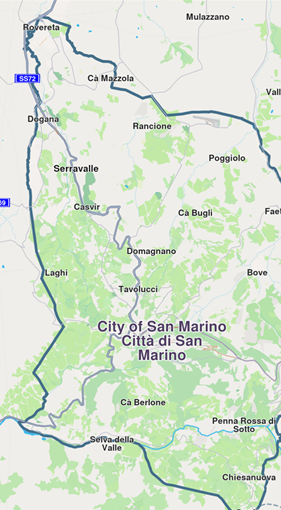Get started with maps
The Maps SDK for Flutter delivers powerful mapping capabilities, enabling developers to effortlessly integrate dynamic map views into their applications. Core features include embedding and customizing map views, controlling displayed locations, and fine-tuning map properties. At the center of the mapping API is the GemMap, a subclass of StatefulWidget, offering a wide range of configurable options.
Display a map
The following code demonstrates how to show a map view. This is the main.dart file.
import 'package:flutter/material.dart';
import 'package:gem_kit/core.dart';
import 'package:gem_kit/map.dart';
const projectApiToken = String.fromEnvironment('GEM_TOKEN');
void main() {
runApp(const MyApp());
}
class MyApp extends StatelessWidget {
const MyApp({super.key});
Widget build(BuildContext context) {
return const MaterialApp(
debugShowCheckedModeBanner: false,
title: 'Hello Map',
home: MyHomePage(),
);
}
}
class MyHomePage extends StatefulWidget {
const MyHomePage({super.key});
State<MyHomePage> createState() => _MyHomePageState();
}
class _MyHomePageState extends State<MyHomePage> {
void dispose() {
GemKit.release();
super.dispose();
}
Widget build(BuildContext context) {
return Scaffold(
appBar: AppBar(
backgroundColor: Colors.deepPurple[900],
title: const Text('Hello Map', style: TextStyle(color: Colors.white)),
),
body: const GemMap(
appAuthorization: projectApiToken,
onMapCreated: _onMapCreated,
),
);
}
void _onMapCreated(GemMapController mapController) {
// Code executed when the map is initialized
}
}
The GemMap widget includes a callback, onMapCreated, which is triggered once the map has finished initializing. It also provides a GemMapController to enable additional map functionalities.
const GemMap(
appAuthorization: projectApiToken,
onMapCreated: _onMapCreated,
),
Multiple GemMap widgets can be instantiated within a single application, allowing for the display of different data on each map. Each GemMap is independently controlled via its respective GemMapController.
Note that certain settings, such as language, overlay visibility, and position tracking, are shared across all GemMap instances within the application.
